Matt Zeigler is a Managing Director and Private Wealth Advisor with Sunpointe Investments, and he’s been helping people with their money for more than 15 years. He’s also one heck of a writer and publishes an excellent daily (!) note on his Cultish Creative blog and newsletter, which you can subscribe to here.
You can contact Matt at [email protected] and on Twitter at @cultishcreative. As with all of our guest contributors, Matt’s post may not represent the views of Epsilon Theory or Second Foundation Partners, and should not be construed as advice to purchase or sell any security.

My wife and I are on the couch, in tears. “I can’t believe this,” she’s saying. “I feel delirious and my face hurts. Please just – just pass me the tissues. I need a minute.”
I am, at that moment, hoarding the tissue box because A. my seasonal allergies are in full swing, but mostly because, B. we’ve just finished watching a show that was so silly, so over the top, and so stupendously absurd, we are both frozen in place. We’ve been howling at the TV for 27 minutes straight. We are adults, reduced to tears, by something funny on the internet.
We finish mopping up our faces and I say, “Not right now, but we’re going to need to watch this again. That was genius. I think he just won a show that’s not even technically a game show. It’s like he knew the format better than Hot Ones even knows its own format. It’s never going to be the same again. Who can follow THAT performance?!”
I’m baffled. She’s not. She responds, “We can watch it again. And don’t worry, I know that look. You’re trying to figure out what you could write about it. Your wheels are already turning. You should do it.”
And so, here we are.
Even if you don’t watch Hot Ones, even if you’re not a Conan fan – to be alive is to swim in stories. Understanding how we fit into these tales, how popular narratives can work for OR against us – it’s ALL worth studying. And ultimately, as my friend Ben Hunt likes to say, “The most important story is the one we tell ourselves.”
So please, let’s have a laugh at Conan on Hot Ones, but let’s also think this out together: how do you win at story? I’ve got 10 rules to try and help. And, using plenty of examples from the show, let’s see if we can’t get just a little bit better at the stories we tell ourselves too.
***
In the days and weeks following Conan O’Brien’s appearance on the popular Hot Ones YouTube show, there seem to be a few common takes.
Lots of people loved it. Others complained he went too far. Some people believe he meticulously planned every move. Others saw it as completely improvised. Bottom line, everybody who saw it had a reaction.
How To Win At Story Rule #1:
anyone who hears the story should be inspired to react.
The people who were amused by his appearance have been the most vocal, but let’s address the “too far” crowd. Their reaction is extra important, because even if Conan’s performance isn’t your cup of extra-spicy tea, there’s nuance here worth appreciating.
The “too far” crowd are responding to feeling like they’ve witnessed a Narrative hijacking. I don’t blame them. They’re not wrong – narrative hijackings can be deeply troubling and unsettling.
And, we see narrative hijacking all the time. It happens whenever a person takes another person or group’s well-known story (or format, or words, or vibes, or…) and makes that story all about them. We see it in politics, markets, news media, social media, and yes, on YouTube shows.
How To Win At Story Rule #2:
see, sense, and ultimately own the story’s structure.
You can see, sense, and own a story’s structure for good or for evil. You can hijack a story for your own purpose and make people react. But, we’re here for the nuance, and this is where it gets really interesting.
I can hear your brain thinking while I’m typing this out, just for the record. You’re currently saying, “Matt, it’s Hot Ones. Why you gotta be so serious? Just let it be a show.”
OK, fine. If it’s not so serious, answer this “structure” question for me – Hot Ones is a:
- Late Night Interview Style Show
- Game Show
- Reality TV Show
- All of the Above
Did you answer (d)? Good. That’s the right answer.
Because Hot Ones is a fascinating amalgamation of show types, which means it’s an amalgamation of story structures. If you feel like Conan hijacked the Hot Ones narrative, I invite you to unpack which narrative(s) you’re upset he took over. Think about the expectations that each story structure inherently has, and what he defied or defiled about your specific expectations that made you feel all icky-internet commenty about it.
The reason I’ve come back to Hot Ones (the broader show, for season after season) is largely based on this amalgamation of story structures concept. Few shows are willing to risk putting this many potential audience expectations on the table at the same time. It’s easy to misfire. It’s easy to trigger negative reactions.
I love the way Hot Ones takes this risk.
But you know what else is like that? An amalgamation of story structures and at-risk expectations? Life. Career choices. Parenting.
If you felt troubled by the narrative hijacking of it all, get a little more curious here with me.
Conan showed up on Hot Ones to inspire a reaction. He showed up understanding the show has layers of structure and expectations. And, most importantly, he taught us how to win at story WITHOUT hijacking the narrative.
I have proof. I have evidence. And, I have – some additional basics we are going to need to get out of the way first.
***
Story structure 101 time. You’ll want to keep these top of mind. They’re so obvious you’d be forgiven for forgetting they even exist.
All stories have characters.
All stories have a beginning, middle, and end.
All stories have some form of resistance that a main character must either overcome or be overcome by, which is gradually revealed to the audience in the form of a story arc.
Think of the story structures in the multiple-choice question above. Think about how each of them has a main character. How the story is based on the character grappling with whatever is at stake over the course of a beginning, middling, and ending.
On an interview show, we watch a host and guest grapple with surprise questions and answers.
On a game show, we watch how a contestant responds and reacts to a challenge posed by a host.
On a reality show, we watch how the characters handle some characterization of “real life.”
Behind the scenes, the show’s producers work out how to highlight which characters are in which archetypes (good, bad, hero, villain, etc.), and how to structure the stakes so they increase throughout the beginning, middle, and end to make for audience-attention-worth-action.
Look at your life. Tell me the story of your college years. Tell me the story of your marriage. Tell me what happened at work this week.
How To Win At Story, Rule #3:
have a producer’s perspective on the characters, stakes, and arc.
There’s no story to be won without characters, stakes, or an arc. If you ever want to be boring, all you have to do is invert this rule. Way too many people in our lives will forget these 101-level details exist, and they will be dreadfully boring if not downright miserable because of it.
I have met them. I have skipped their YouTube shows. You have too (and that’s OK).
And yet, if you’re willing to embrace how we humans are hard-wired for stories-told-right, you can quite literally make magic out of these ideas.
***
In the event you don’t know Hot Ones at all, and you’ve made it this far into the post, first off – thank you, but now, please allow me spell the show out for you.
Hot Ones features Sean Evans as host (a character), bringing a celebrity guest (the main character) in for an interview, while being subjected to 10 increasingly spicy wings (stakes + story arc template).
At the beginning of each episode, we meet the guest and hear how they feel about spicy food. The middle includes watching the guest handle the increasing levels of discomfort the guaranteed tension-building sauces produce. The end is a reflection on the journey we just observed, with a reward in the form of a promotional opportunity for the celebrity guest.
It’s a damn near perfect formula for a YouTube show. Go scroll for a favorite celebrity on the feed. Somebody you care about is doing something amusing here, so if you’ve never seen it, try literally any episode and then come back (the next paragraph will wait).
Let’s acknowledge the story structure 201 concepts, if only because they’re fun (for story nerds):
The Hero’s Journey: If you wanted, you could talk about how the celebrity guest enters the completely curtained, blacked-out set as an unknown realm. You can immediately see the parallels in the host to a potential guide or mortal enemy-type character. You can see the hot sauces as the sequence of challenges our hero must face on their way to obtaining the treasure of surviving. You can understand the end of each episode as a victory over the heat, complete with a return to the outside world, as a triumphantly transformed post-Hot Ones celebrity.
Greek Comedy/Tragedy: If you wanted, you could find a comic or tragic archetype in the framing of each guest.You could see how the most humble character could laugh or at least keep a positive mindset all the way through the challenges, winning the sympathies of the host and audience along the way, with everyone cheering their survival in the end. You could see how the most hubris-fueled, “Oh, I like hot stuff, I’m not worried” person baits pride to predictably goeth before their inevitable fall.
The point is – they’re all here. The 101 and 201 concepts are as on the table as the sauces and wings, if you are willing to look for them. We’ve got all the show types, all the corresponding expectations, and all the risks of anticipatory failure – all lined up to start each session.
The presence of these ideas makes Hot Ones one of the finest choose-your-own-adventure formats ever invented. It makes each episode unique to the path each guest knowingly or unknowingly chooses to take. And, it makes Conan’s choices an absolute masterclass worth studying.
***
Conan has publicly stated his performance was not premeditated. He was aware of Hot Ones and its premise, but he didn’t make any grand plans for his performance in advance. However, before Conan stepped on set we know he deliberately chose his character’s point of view.
How To Win At Story, Rule #4:
each character has a point of view that frames their thoughts and choices to the audience.
Conan pre-emptively chose to become the most comedically-tragic hero Hot Ones had ever seen. The producers (presumably) figured it out after the recording ended when they went to edit the final cut together. We know they figured it out because of how they baited us with the first 8-seconds of the episode.
The show always begins with a preview clip. This episode’s clip is a detestable display of pure hubris. We see Conan aggressively eating a wing and declaring, “‘What’s gonna happen?!’ What’s wrong with you people? You don’t know what real danger looks like anymore.” He’s looking directly into the camera when he says this. He’s mocking the host, and the whole premise of the show’s stakes, all while gesturing confidently.
Narrative hijacker haters, this is probably what you’re focused on. The over-the-topness of it all. The “this is all about me.” But I present you with the reminder of what Conan, and the show’s producers, are choosing here.
You need pride to goeth before a fall, so Conan is going to give us pride times a million. It’s not a hijacking of the story structures. It’s a co-opting of the story structures, where the guest and the host have co-signed, as they’ll slowly reveal.
***
We have to dissect the show in order from here on out. It’s how stories go. It’s as the show is designed. It’s as the producers intended. It’s as Conan intuited.
The episode officially starts by introducing us to a confidently humble Conan. This is shown in direct contrast to the preview clip. It’s (very much) on purpose.
How To Win At Story, Rule #5:
stakes are built in contrast. manage expectations accordingly by acknowledging the gaps between points, people, and perspectives.
Conan explains how he grew up on tasteless food as a child. How he never tasted real spice until the age of 52. He wastes no time introducing a comedic prop of his own, in the form of his personal physician – Dr. Arroyo – who he’s brought to monitor his health throughout his appearance.
Note that Conan is leading the episode by displaying himself as the Hot Ones trope of a non-spice-friendly guest who fears and respects the sauces. BUT, he’s only presenting this to us to start building contrast. The character he’s presenting is not the character he’s playing. Dr. Arroyo is part of his opening move.
Sean and the hot sauces represent scary status symbols to any spice-fearing guest. Conan and his debatably credentialed, “very affordable” personal doctor represent prideful status symbols to reject his humbly presented persona. Contrasts. When Sean is delightfully surprised by the introduction of Dr. Arroyo, we see he’s in on the pride-plot even as the faux hijacking begins. Sean is a good host. Don’t forget this.
Conan instructs Dr. Arroyo to take his temperature. He gets the reading and announces, “97.8? I run a little cool.”
Yes, on Hot Ones, he runs “a little cool.” Contrasts count. Even in details as small as word choices.
***
Conan plays by the rules and eats the first wing. While most guests (and humans) would put the leftover bones back onto their plate or toss them into the trash, Conan is not an ordinary guest (or human). He asks Sean if he can keep the wing. Sean agrees, and Conan stuffs the bones into his jacket pocket like a spicy souvenir.
Our eyes are glued to him. He’s not letting us do anything else. The sheer number of rules, conventions, and expectations defied in the first 2 minutes – have you ever even considered putting a freshly chewed chicken wing bone into your pocket?!
Sean had established some important deference to Conan in his pre-scripted introduction. Sean cited Conan’s multi-decade late-night hosting career (subtext: directly influential common ground), his pivot to podcast/YouTube (subtext: relatable common ground), and his forthcoming travel show that’s not really what you’d expect from a travel show at all (subtext: they both have shows that are amalgamations of story structures, with the even subbier-subtext that they both know the host and guest role very, very well, cementing the common ground on which their seats are placed for the recording).
How To Win At Story, Rule #6:
all characters and all stakes exist relative to each other. they are merely co-existing at a minimum, and in direct conflict OR cooperation at a maximum.
When Conan tells Sean, “I don’t fear your wings, man,” it looks like conflict. But ask yourself, is it really a fight he wants to pick? Or, is this a relative contrast he needs the audience to see?
Sean’s first post-wing pocketing question is about Conan’s new show. About how it breaks the format of what a travel log could be, citing “the anthropological approach of Anthony Bourdain to the thrill-seeking personality of a person like Bear Grylls.” He wants to know if using comedy is “a hack.”
We’re not going to spend enough time focusing on Conan’s literal answers. There’s only enough time to highlight a few, so pay very close attention to the insight the first question and answer give to the guest/host relationship that’s forming. Conan says the mission of his new show is to make you dumber while having a lot of fun along the way.
How To Win At Story, Rule #7:
once you know the story structure’s details, all attention can be turned to curating the audience’s experience.
Sean and Conan may not have intentionally designed what’s about to go down. But, they have intuitively understood all the pieces that are on the table. And, they will prioritize the audience’s experience above ALL else for the duration of the episode.
***
Conan pleasantly answers Sean’s questions, playing with his role as guest while retaining a pronounced sense of competition and confrontation. On the third wing, when Sean admits to experiencing a little eye-watering from the spice, Conan pounces, “I think that’s just ‘cause you’re meeting your idol.”
Idol, singular. And it couldn’t be the spice, which he has established he is yet to detect. Ask yourself – who’s the host and who’s the guest here, really?
Conan catches himself and pauses to compliment Sean’s hosting skills before the next wing. He also acknowledges the sauces as props. At face value we’re seeing signs of mutual respect, but just beneath the surface the co-signing for chaos is underway.
After the 4th wing Conan laments bad guests on his interview show. He remembers the horror of whenever a guest would deep sigh and look directly at the camera to say, “This isn’t going very well, is it.” How he would look at the audience after this remark and “see 200 souls leave 200 bodies.” “They just told the audience they weren’t getting a good show.”
THAT is narrative hijacking. When you’re a guest, and you override the host to tell the audience the show is doing poorly. You’ve co-opted the story structure and driven it off a cliff.
“That’s not show business. Show business is you’re getting the greatest show in the world,” Conan explains.
Now pause and ask yourself, what might a good host playing the role of a good guest sound like, right here, right now. Have an idea? Good.
How To Win At Story, Rule #8:
build tension, release tension. increase contrast, extinguish contrast. over and over, at increasing levels of flourish, in service to the audience’s experience.
Call that idea back to mind from a sentence ago – now, here’s how Conan continues,
“I don’t think there’s a wing here that I can’t eat like it’s ice cream. Seriously, I don’t think that there’s a wing on this table,” I interrupt this quote to point out Conan is looking directly into the camera as he says this next bit, please see the aforementioned soul-leaving-body comment if you’ve already forgotten it,
“Seriously, I don’t think that there’s a wing on this table that I can’t devour like it’s cool whipped cream on an August afternoon.”
Of the 9.3 million views this episode has as of this writing, you can now imagine 9.3 million souls being hijacked in some sort of YouTube-seance by Conan the Los Angeles Medium. You are getting show business. You are getting the greatest show on earth.
The wings continue to be consumed. The interview stories continue. We, the audience, are still awaiting his reaction to the heat. Sean, the host, is playing his role as best he can. The level of intention on display is downright intoxicating.
***
Between the 6th and 7th wings, the music changes. This is a standard Hot Ones convention. The tension, along with the heat level, has reached a point where many guests start to falter.
In Greek plays, in tons of art, and in naturally-made-nature – the Golden Mean signifies an important number. Mathematically, it represents the asymmetry required for growth, as is evidenced by how petals are arranged on a flower, along with a million other cool “in nature” examples, which our ancient ancestors studied and algebrafied.
In stories, we can find the Golden Mean applied when a storyteller starts the climax somewhere between 6- and 7-tenths of the way through the story. There are many variations on this. But as audience members, we’ve been trained to expect the asymmetric acceleration in plot, and the greatest storytellers use that expectation to their advantage.
Hot Ones respects the Golden Mean, hence the deliberate heat and music changes just past the halfway point, at the 6th and 7th wing. And Conan knows this story device too, so he’s intentionally and intuitively prepared for it. He’s ready to lean all the way in, and create – with Sean – the aforementioned co-signed chaos.
I’d ask if you’re ready, but I know you’re not. Enjoy the ride from here on out. Make sure you’re buckled up.
***
At the 7th wing, Conan calls Dr. Arroyo out to help him open a bottle of the hot sauce, which Conan then proceeds to dump all over a half-eaten wing to produce the “you don’t know what real danger looks like” clip they used to start the episode.
The scene is Golden Mean, pride goething, spicy perfection.
The expectation of Conan’s heat-induced death is now fully signed, sealed, and in the mail for delivery as he grabs the bottle of sauce and proceeds to drink it. Yes, he drinks the hot sauce, directly from the bottle, and then asks, “My question to you – is there a point when these get warm?”
Word choice, again. He runs cool, remember? And he’s finally starting to lose it, visibly, which is the show’s natural magic coming to life here. Because hubris is dangerous, which we in the audience know, and which Conan has proven he will toy with for our collective entertainment.
He’s not just a good guest. He’s the best guest. Because he takes this so seriously. It’s a business to him. It’s show business for us.
Da Bomb, exquisitely named, is the sauce that (usually) fully breaks most celebrity contestants. It’s been #8 since the second season for this explicit purpose. Sean will regularly comment how, “This one is just bad.” He’ll explain how it’s hot for the sake of being hot, without any redeeming flavor (and many of the heat-appreciating guests have agreed – it’s just awful).
Conan dumps more of Da Bomb onto his wing than any he’s added up to this point, and proceeds to suggestively lick the bone like it’s a popsicle, all while shouting, “Come on man, are we doing this or not?! What’s the point of being alive if we can’t do this?”
How To Win At Story, Rule #9:
all rules are expectations, and expectations may be defied, defeated, or defiled for sake of contrast in service to audience entertainment.
The famous Zen koan asks, “If a tree falls in a forest and no one is around to hear it, does it make a sound?” The same question can be applied to rules. “Can you break a rule that you didn’t know was a rule in the first place?”
The thought of a falling tree can cause you to introspect on your lived experience. A learning of rules for the express purpose of breaking them can get you to introspect on how you’re living too. And, at this point, the falling tree koan that is Conan O’Brien’s Hot Ones appearance is about to teach us one more, very noisy, very messy lesson.
***
There’s an important exchange after Conan challenges Sean’s aliveness during wing #8 we have to highlight.
The show uses a reverb-laden after-effect whenever the guest gets their spicy-bell rung. Conan seems to sense he’s had this moment, and counters with moar pride. As the sauce is undeniably taking him over, Conan decides to declare that Sean is no longer speaking correctly, “As everyone in the studio will agree.”
But Sean’s not speaking incorrectly, Conan’s just begun to fully unravel. He admits he shouldn’t have drank from the bottle. Sean says, ‘If you weren’t being so braggadocious in the front half, I probably would have tried to stop you,” which is as much an evil-villain line as you’re going to get from our friendly host.
So on sauce #9, we watch Conan lather even more sauce onto the wing. Conan says boastfully, “I like to announce my mistakes up front.” Sean counters, “Nothing about this is a mistake. Every step of the way – intentional.” We watch him rub sauce all over his hands. Then all over his tongue. Then… just watch it, don’t make me write it. You’ve already seen the memes. It’s filthy. It’s spectacular.
Nothing about this is a mistake. Every step of the way, it’s all been irrefutably, intuitively intentional. They are a duo, they are a partnership, they are an unholy union, bound in story together, until the beautiful end.
***
The final wing. The ultimate sauce. “The Last Dab,” as the show labels it.
“You said this was pure pepper? So there’s nothing here, there’s no safety net,” Conan declares, right before taking another swig, this time from the hottest of hot sauce bottles on the show, while announcing, “I’m just not getting it.”
This is officially the climax. This is the grand finale. This is Conan’s last stand, extra Custer at Little Big Horn vibes, and it’s the final subversion of the audience’s expectation that even the most prideful guest will eventually crack under spicy pressure.
How To Win At Story, Rule #10:
hijacking stories is conspiring for angered enragement. co-opting stories is co-signing for inspired engagement. the former is for hacks, the latter is for hopes.
Sean and Conan both won Hot Ones. They won together. As host and guest, as co-opting co-signers of what show business is and can be.
As students of story. As messengers of hope.
The last question and answer is an alley-ooped, buzzer-beating, mic drop of an exchange to close us out:
Sean: If you were crafting a curriculum of a comedy survey course, can you give us one book to make sure that your students understand that the building blocks of comedy are not at all new?
Conan: What are you gonna read? Read widely. And read well. There’s comedy in the Old Testament, there’s comedy in the New Testament. You can read all kinds of stuff. Just don’t lock yourself into “it’s gotta be some comedy from the last 10 years,” no! There’s great comedy out there that was written a long time ago. What’s funnier than Don Quijote’s Sancho Panza? You know? This is good stuff. The classics are funny. Read Chaucer’s Tales, they’re funny. There’s funny everywhere, don’t be a snob. Look high and look low. A Mad Magainze is funny. There’s funny stuff online all the time. There’s no reason for us to try to exclude one category over another. These aren’t the rantings of someone who’s had some bad chemicals and overdid it to be funny and relevant to people who are at least 50 years younger than him. This is a guy who’s just being on a show and it’s legitimate. So I say, “Here’s to you Sean,” (raising his glass of milk), “You’re a great m************ host!”
How To Win At Story Recap (And A Footnote To The Rules)
It’s not hard to win at story. There are rules. All you have to do is follow them.
And it’s not easy to win at story either. There are rules others will play by. Rules you won’t agree with. Rules you’ll have to adapt to. There are stories you’ll just have to quit playing.
Beyond rules, there are roles. Characters – with expectations. Hosts and guests, heroes and villains, home teams and away teams, etc., et. al.
The only way to win at story is to study story structure.
The only way to win at story is to attempt to understand the story you tell yourself.
Yes, attempt. Because when one story is won, another begins. So our only advantage is learning the language of why. To apply it along the way. To apply our understanding from within.
We need the old stories. They’re all fair game. Don Quijote to Chaucer’s Tales to Mad Magazine – they’re audience-tested masterpieces for good reasons.
We need new stories too. They’re updates on the classics in today’s terms. We need (yes NEED) Conan O’Brien and Sean Evans, together on Hot Ones, giving us a modern masterclass in winning a 27-minute-and-20-second long YouTube story.
We need all of it because, my fellow humans, we need stuff to talk about. Stories to engage us, not enrage us. Stories to practice telling to and with others. Stories that hold up different mirrors, with different narrative arcs, and different character roles to help us reexamine the stories we tell ourselves.
You’ve met miserable people. They’re the ones who think it’s all hard. The idea there’s no discernible story aside from the plot against them is their story. And that’s their choice. It’s all about them and they can’t figure out why anything is the way it is anyway, so they’re going to tell you about (probably in a social media post). They could benefit from reading these rules. I hope they’re in the audience and have made it this far.
You’ve met the angry people. The ones who hijack narratives to tick one group off while charging another up. That’s their story. That’s their choice. It’s all about their gains, and they know how they’re going to “win” (also probably communicated via a social media post, or on stage at a political rally, or… yeah. Angry people. Ugh.). We need to know these rules to call them out on their practices. They suck as much as the talk show guest who says, “Well, this isn’t going very well,” but this is our way to not get sucked down by them too.
And finally – have you met the hopeful people? The one’s who co-opt stories to inspire and bring people closer together? The one’s who create for sake of engagement (in real life, or in authentic interactions on YouTube shows, and… hello there, I see you reading this, I’m talking about us now).
People. Guests, hosts, and audience members. Lend me your eyes.
It’s a choice to tell the stories we tell.
Aim to engage.
Aim to inspire.
And if you don’t know where to start?
Start small. Start simple. Start local. Start with the story you tell yourself. Continue with the story you tell just one other person.
For example, after a long day at work, I want to sit on the couch with my best friend and watch shows that make us laugh until we cry. Then I want to write about it. And then I want to do it all over again.
Want to win at story? It’s as easy as that. Keep the hope alive.
If you liked this story, share it with someone, or even better – talk to someone about it. Nothing spreads hope like sharing a friendly laugh. Nothing.
Special thanks to Val for encouraging me to write this, Scott for helping me figure out my core ideas when I was stuck, and bonus thanks to Ben Hunt, Tom Morgan, Paul Millerd, and all of the others I’ve been talking to lately who have directly and indirectly inspired this piece.
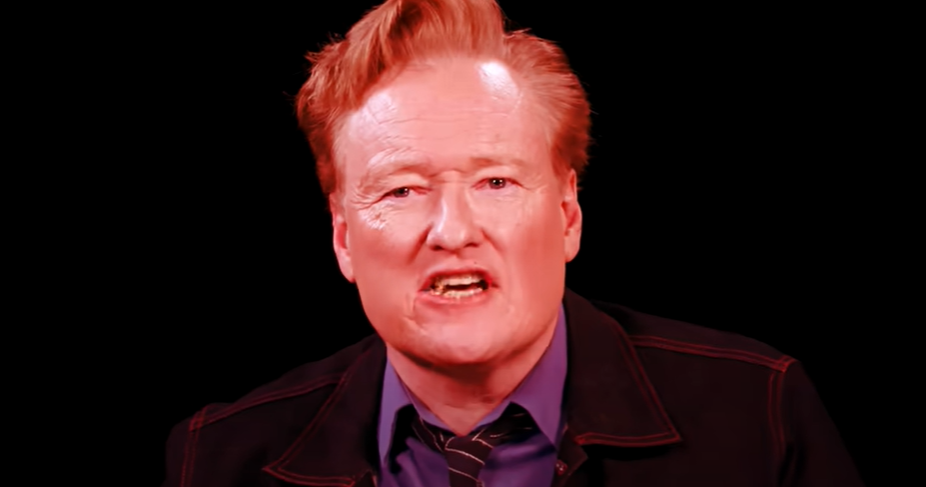


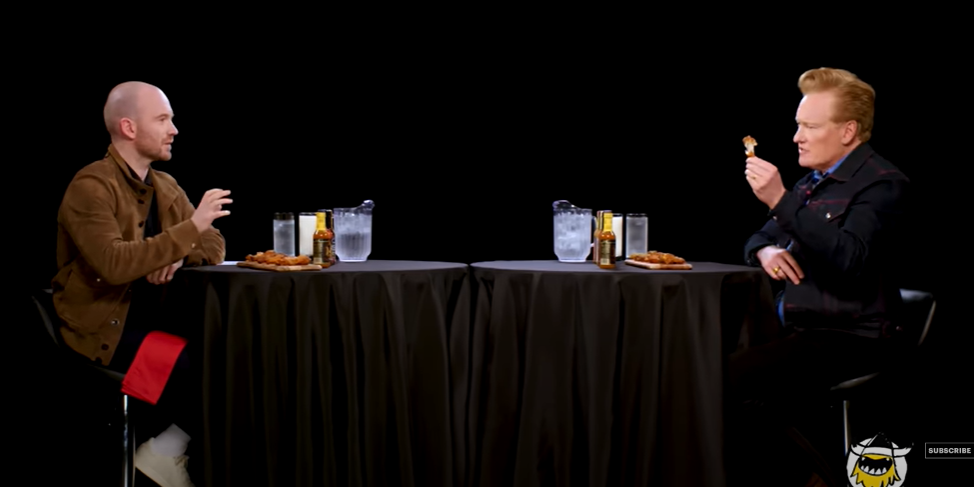




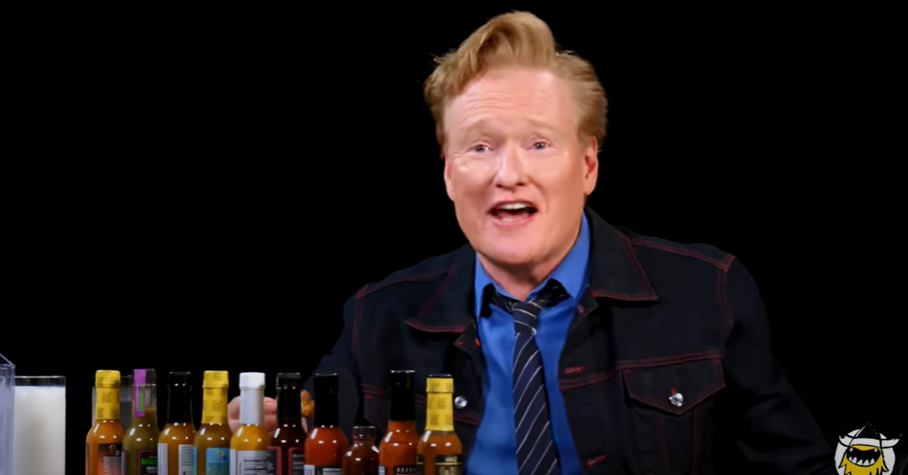

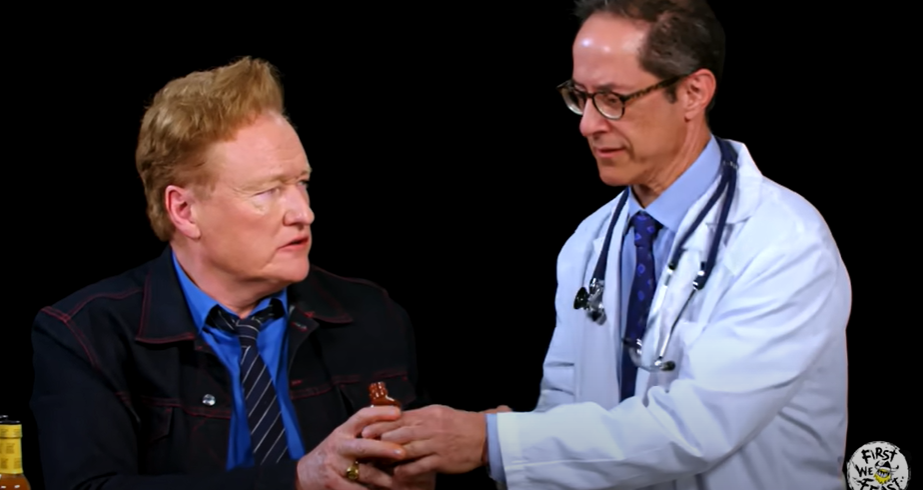


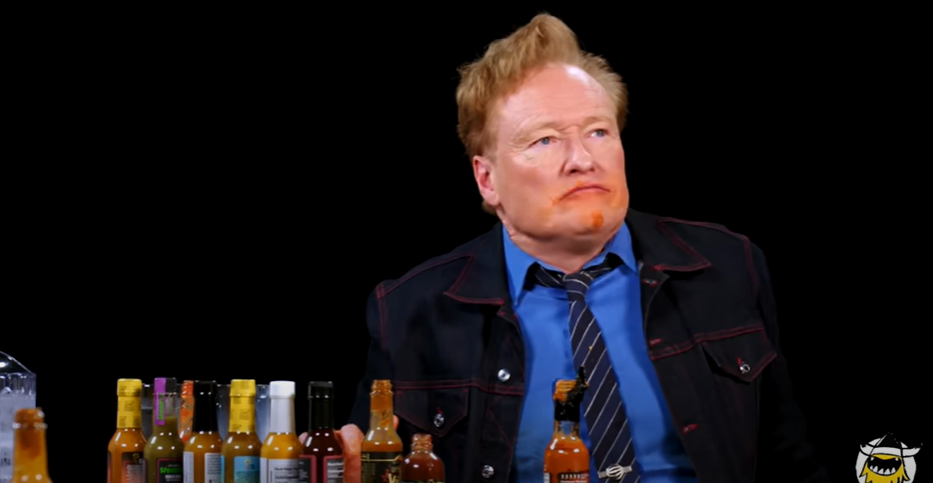
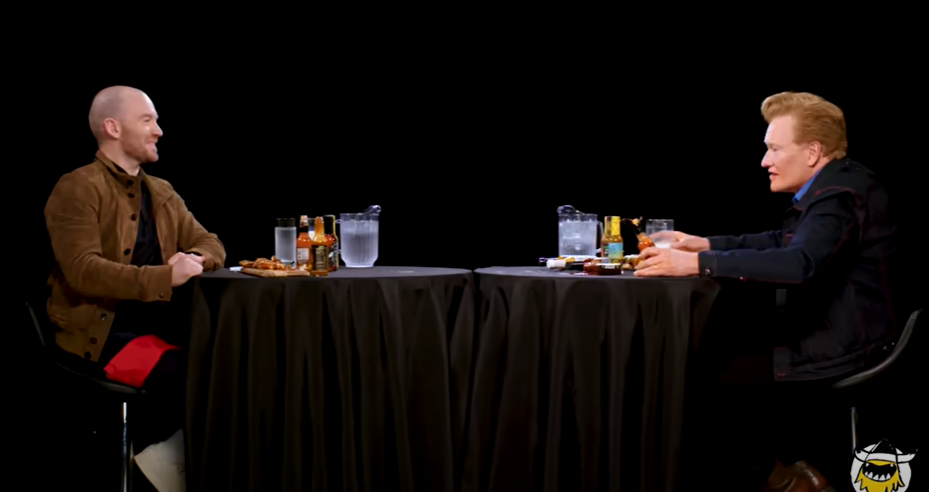
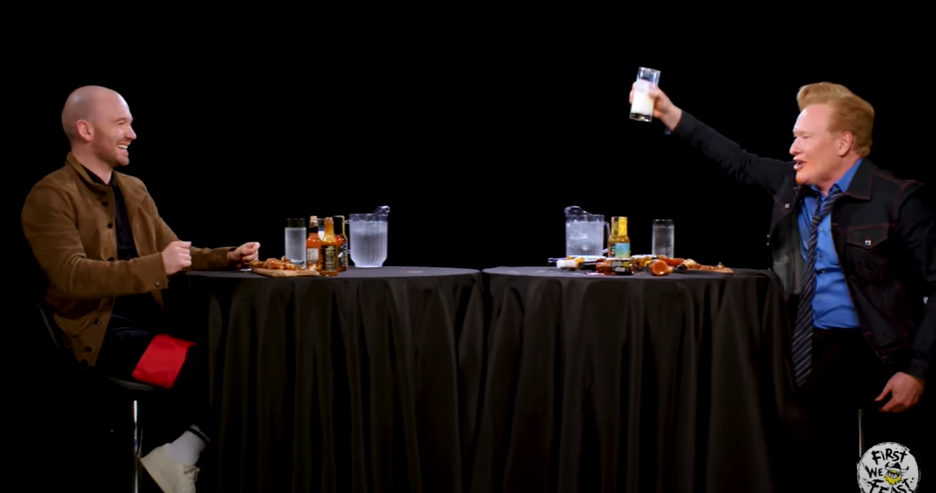
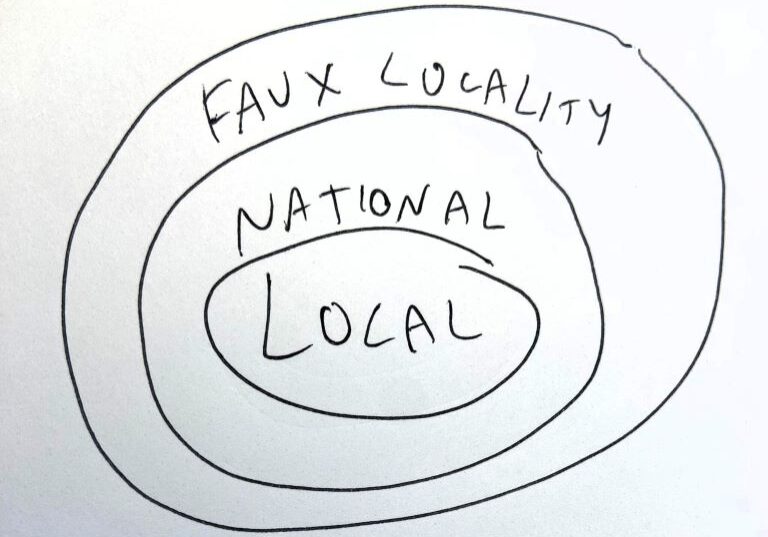
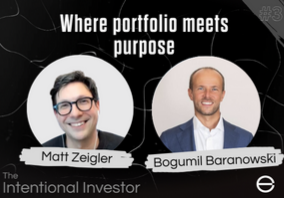
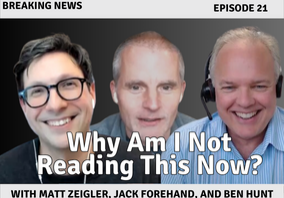

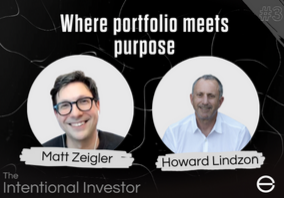
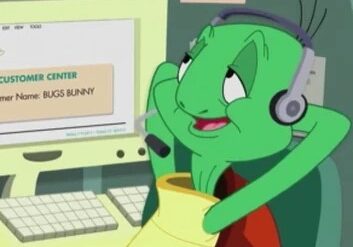

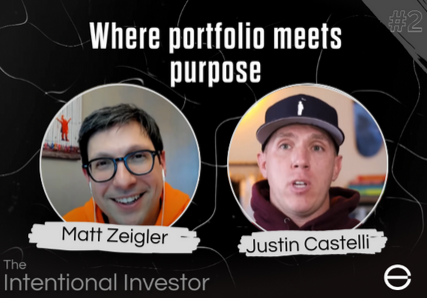

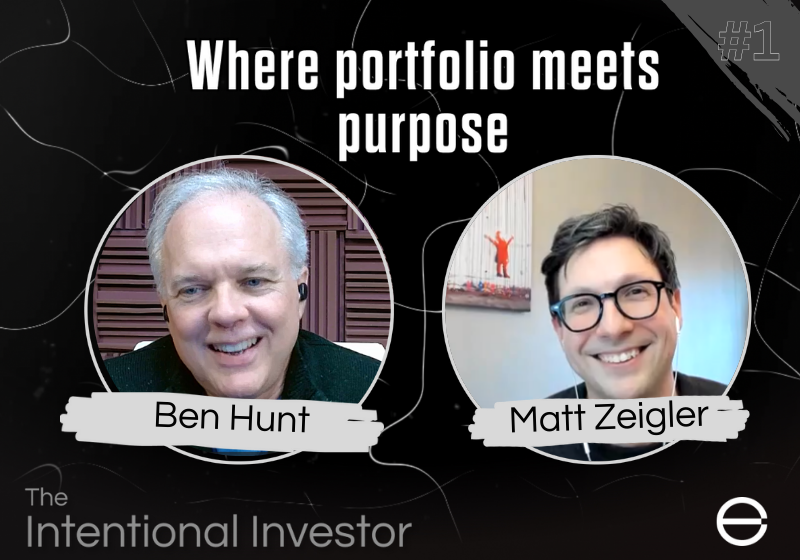
Damn. Well this piece didn’t disappoint!! I agree with so much, hey, pretty much all of this. Conan did not disrupt the Hot Ones narrative, he took it by the reins and turned it up to 11!! Especially at that crucial point where you would expect someone to cave and panic, Conan was like, “NOPE! I am a force of nature!”
Love the inclusion of the golden mean (which I had previously only known as the golden ratio) which affects so much of our natural world.
Bravo, @MZeigler3!
Or, to put it another way (which I’ve seen more in Black/African-American spaces), Conan understood the assignment.
the intuition to do this, to see it as the assignment (you got that expression right too), it was just flawless. And I have to believe if you can see this stuff on a show like Hot Ones, you can use it to your benefit in so many other aspects of life.
Especially in community with others. How do we contribute - this generously - to the people who are hosting us at the tables we choose to sit down at?
Real stuff. Thanks @Tanya!
It was fun to watch and this is a great description of the dynamics around why that is. But forgive me for being a stick in the mud, but how might attitudes be different around this and every other forced ‘mass social’ event such as the Tom Brady roast, Taylor Swift, etc ‘after le deluge’ as Ben has so strongly argued recently.’ Meaning, won’t the ‘fun little social manias’ that grab so much attention now be meaningless in a real economic, political or social meltdown? And isn’t that what most of us are worried about? More importantly, will the narrative dynamics be the same then or different?
@MZeigler3 Thank you for writing this! I too have loved and watched Hot Ones for a long time, since back when Sean was interviewing small time rappers and up and coming comedians from the first couple seasons. I watched it grow and was so happy for Sean, the show, the medium etc. I even bought some of their inaugural hot sauces to try out. But a funny thing happened eventually after so many seasons of eagerly anticipating each new episode week after week…
I simply stopped.
No resentment, no anger or any of that, I just didn’t come back and something that brought me genuine joy and excitement faded away from my life and media consumption.
I’d see the memes float around of Paul Rudd, Idris Elba, Sydney Sweeney, Jennifer Lawrence etc that would come across my social media and think, “Good for Hot Ones, still part of the internet zeitgeist. So happy for them,” but I never went back to watch an episode.
Until my wife, knowing how big of a fan I used to be, forced me to sit back down and watch the Conan episode with her. I once again found myself full belly laughing, my face hurting from smiling for so long. Yet despite finding my joy from the show to still be intact, the Conan episode was a one-off affair, my joy having burst through in the moment but the excitement and engagement was gone as soon as I went to bed that night.
Until I read your post.
You helped me realize that my enjoyment went away because my perceived expectations of the show weren’t matching up to what they were doing. I was used to and enjoyed the Interview style show mixed with Game show and less the reality TV aspect, but in reading and reflecting upon what you wrote, realized that all aspects of the show are important to the story of Hot Ones.
I am once again looking forward with anticipation and excitement to go through all the seasons and guests that I have missed out on. Hopefully in applying and reviewing what you’ve written about story structure, I will be able to enjoy Hot Ones even more than I did before.
Thank you very much!
Conan’s masterclass is potentially a gift that keeps on giving … look for Conan’s podcast where he interviews the actor who plays Dr. Arroyo, in character.
I purposely did not watch the episode until I knew that this piece was up. I wanted to have it be as fresh as possible in my mind before reading the breakdown, knowing that it would be itself a masterclass. You didn’t disappoint @MZeigler3
This is the Conan O’Brien of Notes about Conan O’Brien’s appearance on Hot Ones. Most meta thing I’ve seen in ages.
I love this!
Fact check: TRUE
I appreciate the point, and even the broader sense of worry, but - these are all still unifying events. These are ways people who might otherwise disagree, or think they have nothing in common can still share a moment. Whatever awful awaits, the ability to create small versions of pro-social engagement with other humans… there’s no time that ability doesn’t matter. The narrative dynamics will be the same, even if the stakes aren’t.
Wow. @jtpocean - thank you.
I know exactly the feeling you described too. We all go through versions of it, even with our most favorite things. Habit that doesn’t re-stoke curiosity is not a good habit. Anything to turn curiosity up, like looking for story structure stuff in even the most familiar places, is one thing that always helps me.
Stay curious.